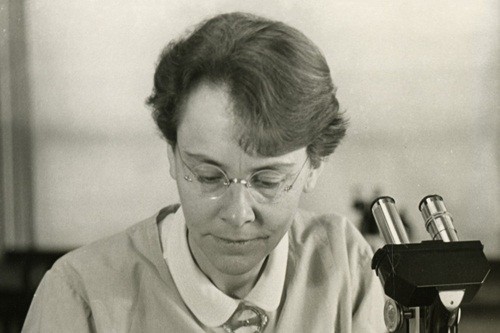Men often dominate discoveries and Inventions; Notwithstanding, the contribution of women to the progress of these areas cannot be overlooked. There have been remarkable contributions that gave science a new direction; without these brilliant women, the world would not be the way it is today.
There have been numerous women scientists who gifted and far-famed women scientists in history, we’re are listing some of them below:
- Katie Bouman
It’s been decades since we came to know about black holes but we only had theoretical knowledge of them. No image of the black hole was available to date. But an MIT’s Computer Science and Artificial Intelligence Laboratory scientist Katie Bouman made an algorithm that converted the telescopic data into a historical image which is now known as the first-ever image of a black hole.
No single telescope is powerful enough to capture the black hole, so a network of eight was set up to so do use a technique called interferometry. The data they captured was stored on hundreds of hard drives that were flown to central processing centers in Boston, US, and Bonn, Germany. Dr. Bouman’s method of processing this raw data was said to be instrumental in the creation of a striking image. She spearheaded a testing process whereby multiple algorithms with “different assumptions built into them” attempted to recover a photo from the data.
2. Marie Curie

Marie Curie was a brilliant physicist, chemist, and the first woman to win a Nobel prize. She discovered polonium and radium, and her work helped with the creation of X-rays.
She was also first to win two Nobel prizes (the only woman to do so) and the only one to win the Nobel prize in two different scientific fields.
Marie Curie is part of the famous Curie family legacy, with 4 Nobels in their credit, more than many countries can claim.
She worked mainly with radioactive elements such as radium, which ultimately caused her death. Due to the levels of radioactive contamination, her papers and cookbook from the 1890s are considered too dangerous to handle due to radioactive and those who wish to read her books should wear protective clothing form radiation.
The exposure to radiation in the course of her scientific research and her radiological work at field hospitals during World War I led her death in 1934 at the age of 66 in France.
3. Emmy Noether

Emmy Noether was described by Pavel Alexandrov, Albert Einstein, Jean Dieudonné, Hermann Weyl, and Norbert Wiener as the most significant woman in the account of mathematics. She explained the theories of rings, fields, and algebras. In physics, Noether’s theorem tells the connection between symmetry and conservation laws.
Her works cover a vast landscape. She worked on differential and algebraic invariants, contributed heavily in the theory of mathematical rings, noncommutative algebra, linear transformations.
She is also renowned for developing ascending chain conditions, a simple finiteness condition that yielded powerful results in her hands. Such terms and the theory of ideals enabled Noether to generalize many older results and to treat old problems from a new perspective, such as elimination theory and the algebraic varieties that had been studied by her father.
In 1932, she received the Ackermann-Teubner Memorial Award for her contributions to mathematics.
4. Barbara McClintock

Although recognition and honors came to her quite late, Barbara McClintock is now regarded as one of the most influential scientists in genetics, perhaps only below Gregor Mendel. McClintock contributed significantly in the field of cytogenetics and was the first to produce a genetic map for maize. She did extensive studies in the subject, but the scientific world was skeptical about her findings. Later they were recognized, and she eventually won the Nobel Prize in Physiology in 1983.
5. Vera Rubin

Vera Rubin, who was born in 1928, proved that dark matter existed in the universe by concluding that invisible gravity sources were pulling planets and stars in certain directions. She was awarded the National Medal of Science in 1993 by President Clinton. In its obituary for Rubin, who died Dec. 25, 2016, the New York Times wrote, “Dr. Rubin, cheerful and plain-spoken, had a lifelong love of the stars, championed women in science and was blunt about the limits of humankind’s vaunted knowledge of nature.”